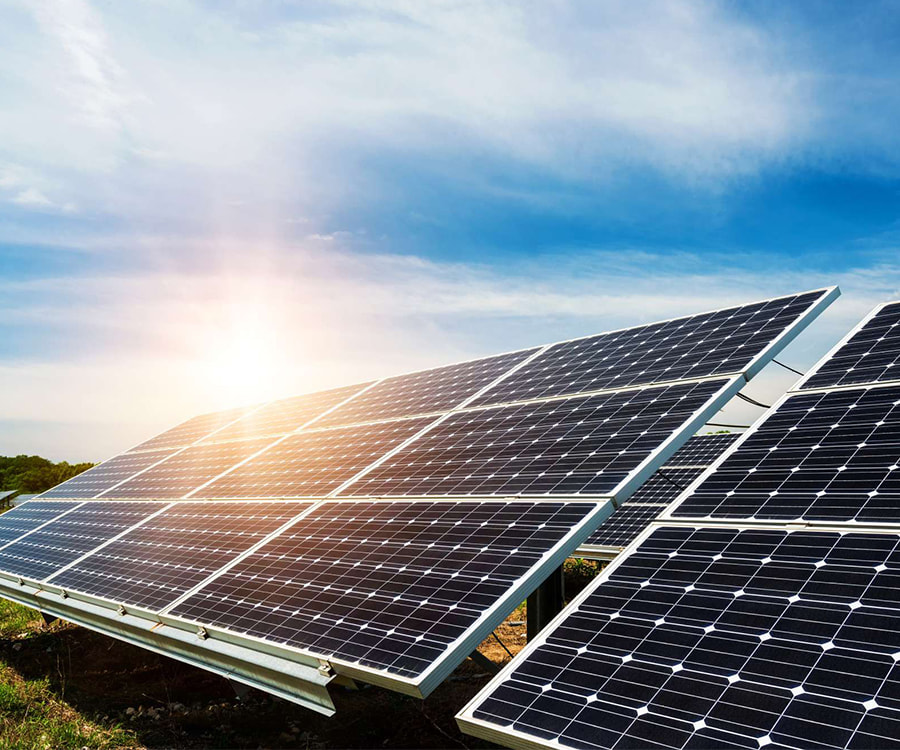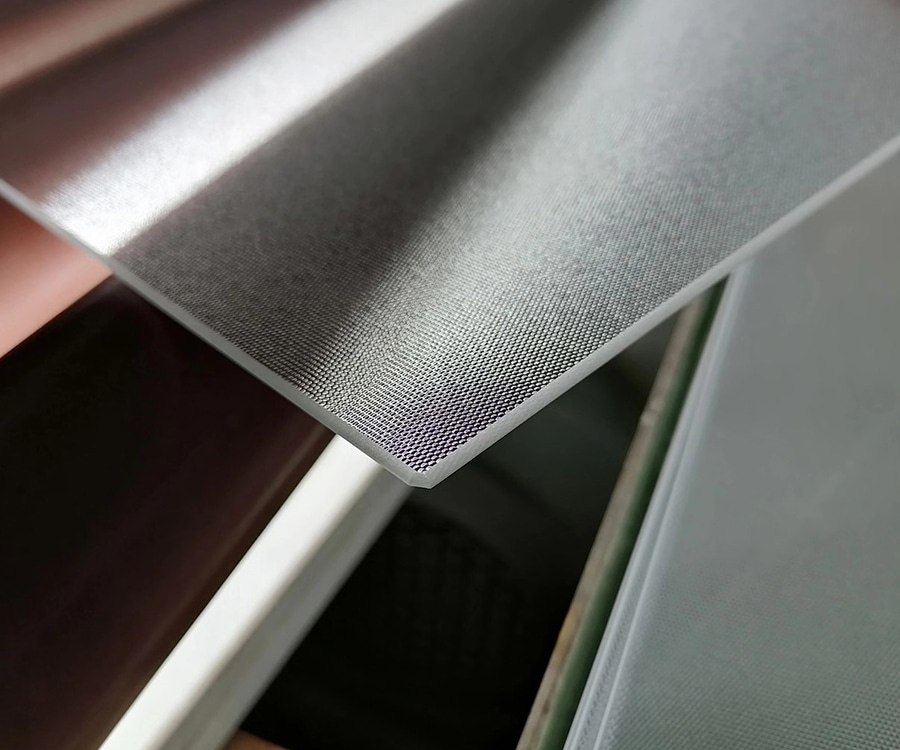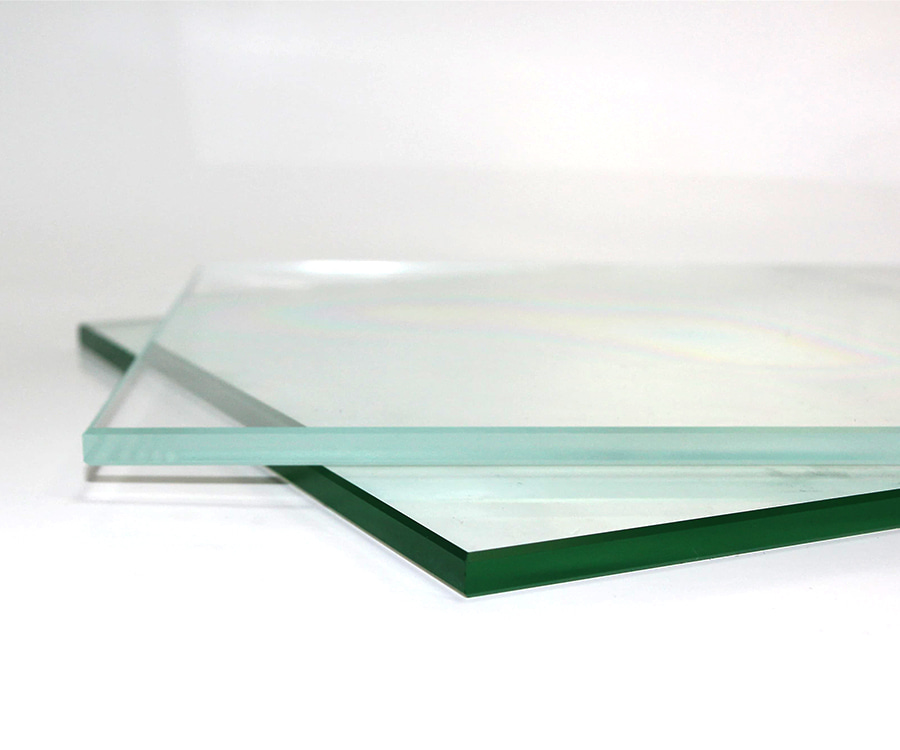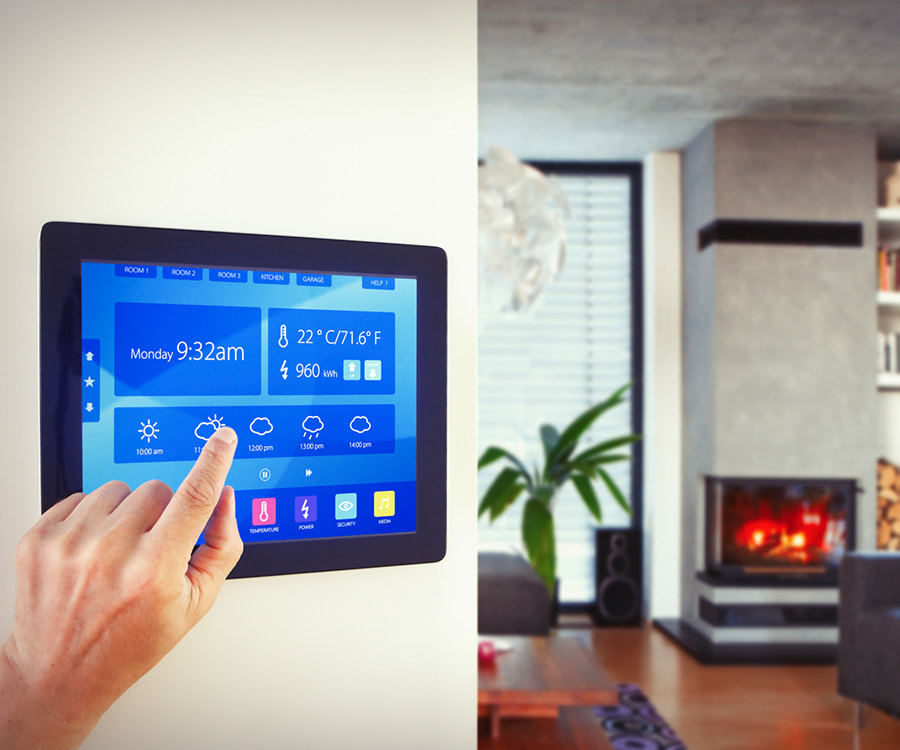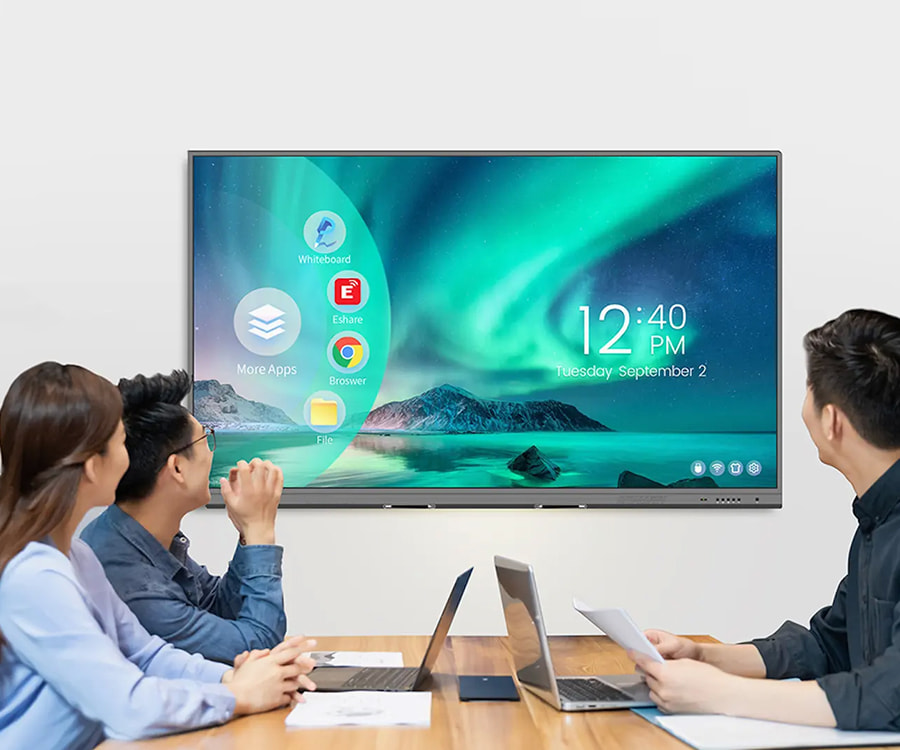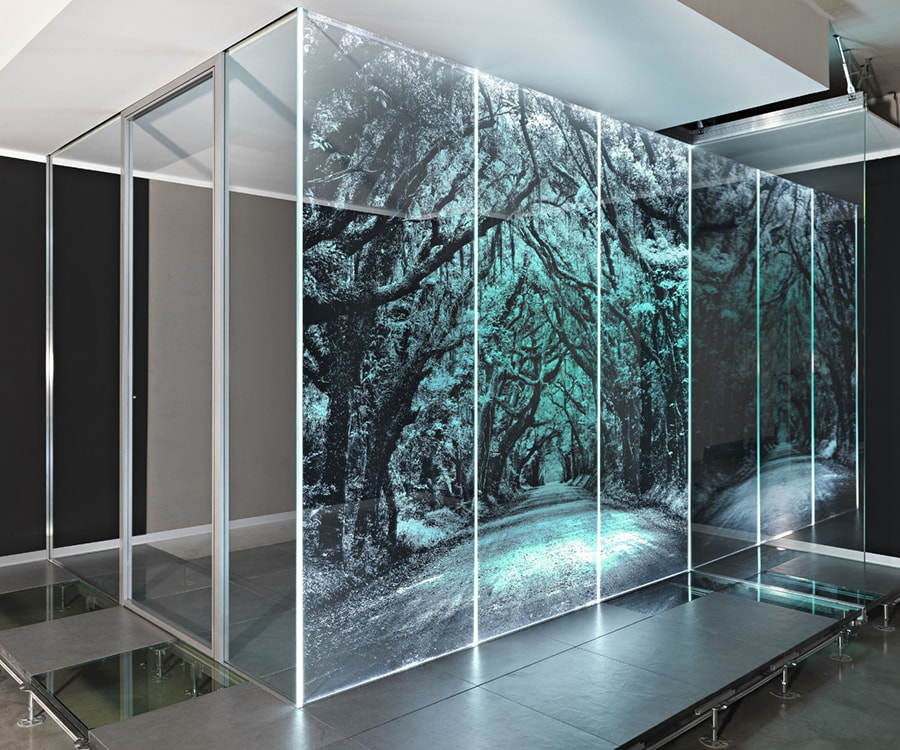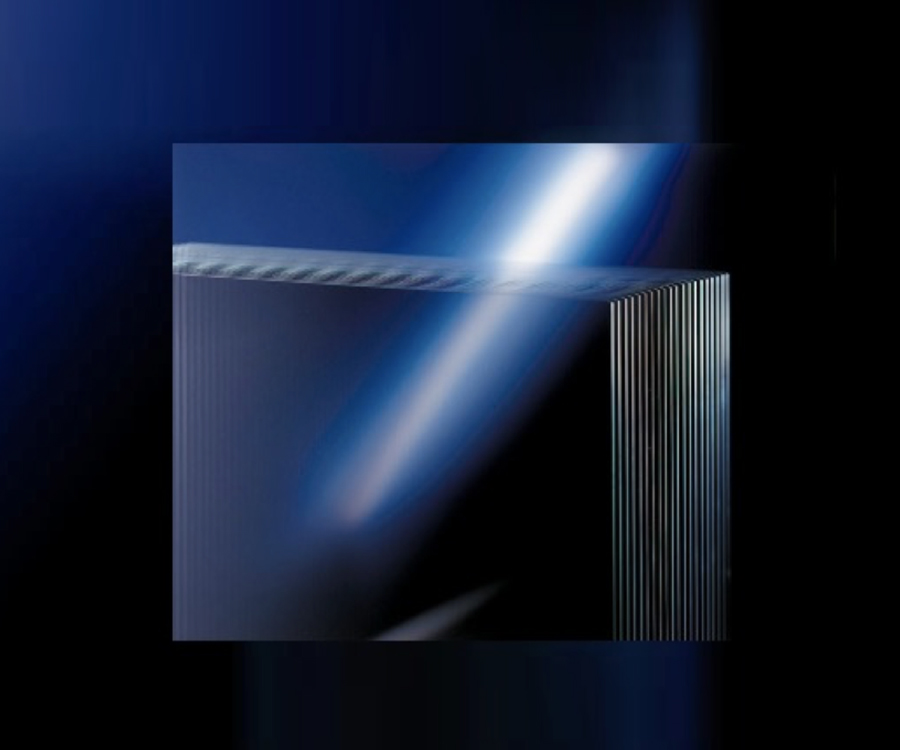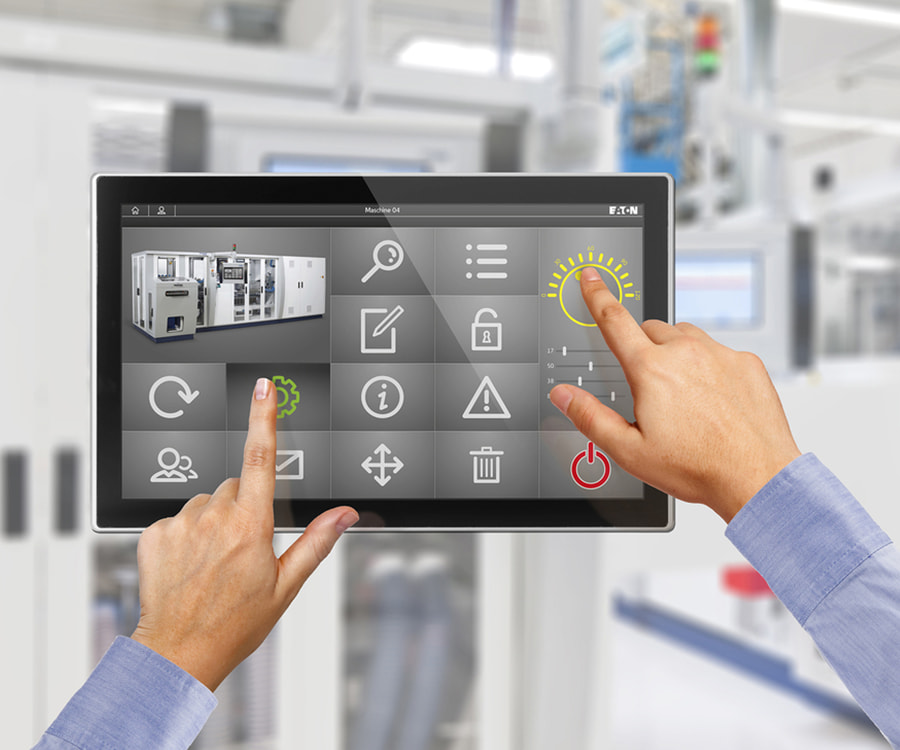Solar glass is a building glass material that integrates solar power generation function. It can absorb sunlight and convert it into electricity while maintaining the transparency of the glass. This glass is usually made of multiple layers of composite materials, including:
Low iron glass: As the front glass, it has high light transmittance and good UV resistance.
Solar cell: Embedded between the glass, responsible for converting solar energy into electricity.
Glue layer: used to fix the cell and enhance the overall strength of the glass.
Back glass: provides structural support and forms a sealed structure with the front glass.
Conductive line: used to export the generated electricity, usually printed with silver paste or copper paste.
The transmittance of solar glass is usually above 90%, which is close to the transparency of ordinary glass. Therefore, it can be widely used in building exterior walls, roofs, windows, skylights and other parts to achieve the dual functions of "power generation + transparency".
Is solar glass really useful?
Solar glass does have high practical value, which is mainly reflected in the following aspects:
1. Building energy conservation and green buildings
Solar glass can provide clean energy for buildings, reduce dependence on traditional power grids, and reduce carbon emissions. In commercial buildings, such as office buildings, shopping malls, hospitals, etc., solar glass can significantly reduce energy costs while improving the environmental image of buildings. Many countries and regions have subsidy policies for green buildings, and buildings using solar glass are more likely to receive government support and tax incentives.
2. Improve the aesthetics of buildings
Since solar glass has high light transmittance and will not affect the visual effect of the building, it can be used in the facade design of the building to achieve the effect of "generating electricity without losing beauty". In urban environments, this type of glass is particularly suitable for places with high aesthetic requirements such as high-rise buildings and commercial centers.
3. Applicable to a variety of application scenarios
Architectural fields: such as residential buildings, office buildings, schools, hospitals, etc.
Transportation fields: can be used for automotive glass, high-speed rail windows, airport terminals, etc.
Electronic equipment: such as solar mobile phones, solar tablets, solar electric vehicles, etc.
Agricultural fields: can be used in greenhouses to achieve the combination of agriculture and power generation
4. Promote the development of renewable energy
Solar glass is an innovative product that integrates solar technology and building materials, which helps promote the widespread use of renewable energy in urban infrastructure. It is not only a building material, but also an energy solution that helps achieve sustainable development goals.
Can solar glass insulate?
Solar glass has a certain degree of insulation function, but its insulation effect depends on its design and coating technology. Here are the specific instructions:
1. Low-E coating
Many solar glasses are coated with low-emissivity (Low-E) coatings on the surface, which can reflect infrared rays and reduce the amount of solar heat entering the room, thereby improving the thermal insulation performance of the building. Low-E coatings can also reduce the loss of indoor heat to the outside, which helps to keep warm in winter.
2. Hollow structure or sandwich structure
Some solar glasses use hollow structure or sandwich structure to further enhance the insulation performance. Hollow structure can reduce heat conduction, while sandwich structure can enhance the strength and safety of glass.
3. Limitations of thermal insulation performance
Although solar glass has a certain thermal insulation capacity, its main function is still power generation and light transmission, and its thermal insulation performance is usually not as good as special thermal insulation glass. If a stronger thermal insulation effect is required, it is recommended to use other thermal insulation materials or systems in combination.
Solar glass is a high-tech building material that integrates power generation, light transmission, and thermal insulation. It is widely used in construction, transportation, electronic equipment and other fields. It can not only provide clean energy for buildings, but also improve the aesthetics and environmental performance of buildings. Although its thermal insulation performance is not as good as special thermal insulation glass, under reasonable design and application, solar glass can effectively reduce the energy consumption of buildings and promote the development of green buildings.


